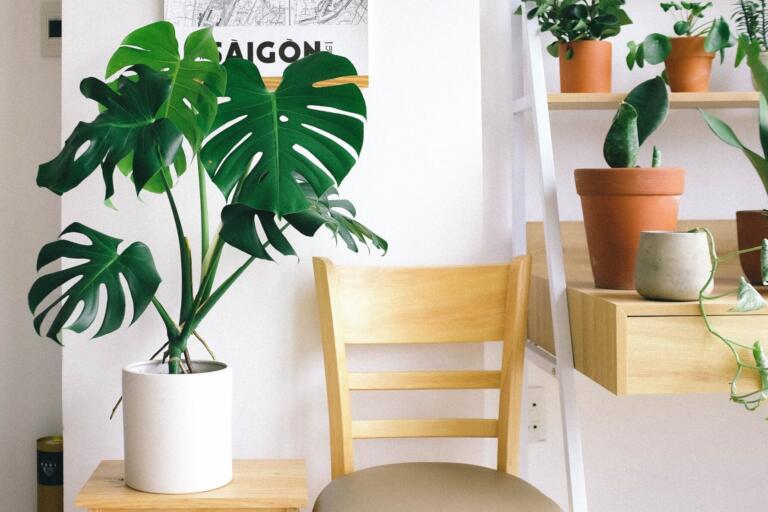In the world of gardening, the allure of best low maintenance indoor plants holds a special place, especially for beginners. These plants, apart from adding aesthetic value to your indoor space, require minimal care, making them perfect for busy or novice plant owners.
Among them, the Snake Plant and the Spider Plant stand out for their resilience and beauty. This article will guide you through a selection of indoor plants that promise to bring life to your space without demanding much in return.
1. Snake Plant: The Resilient Champion
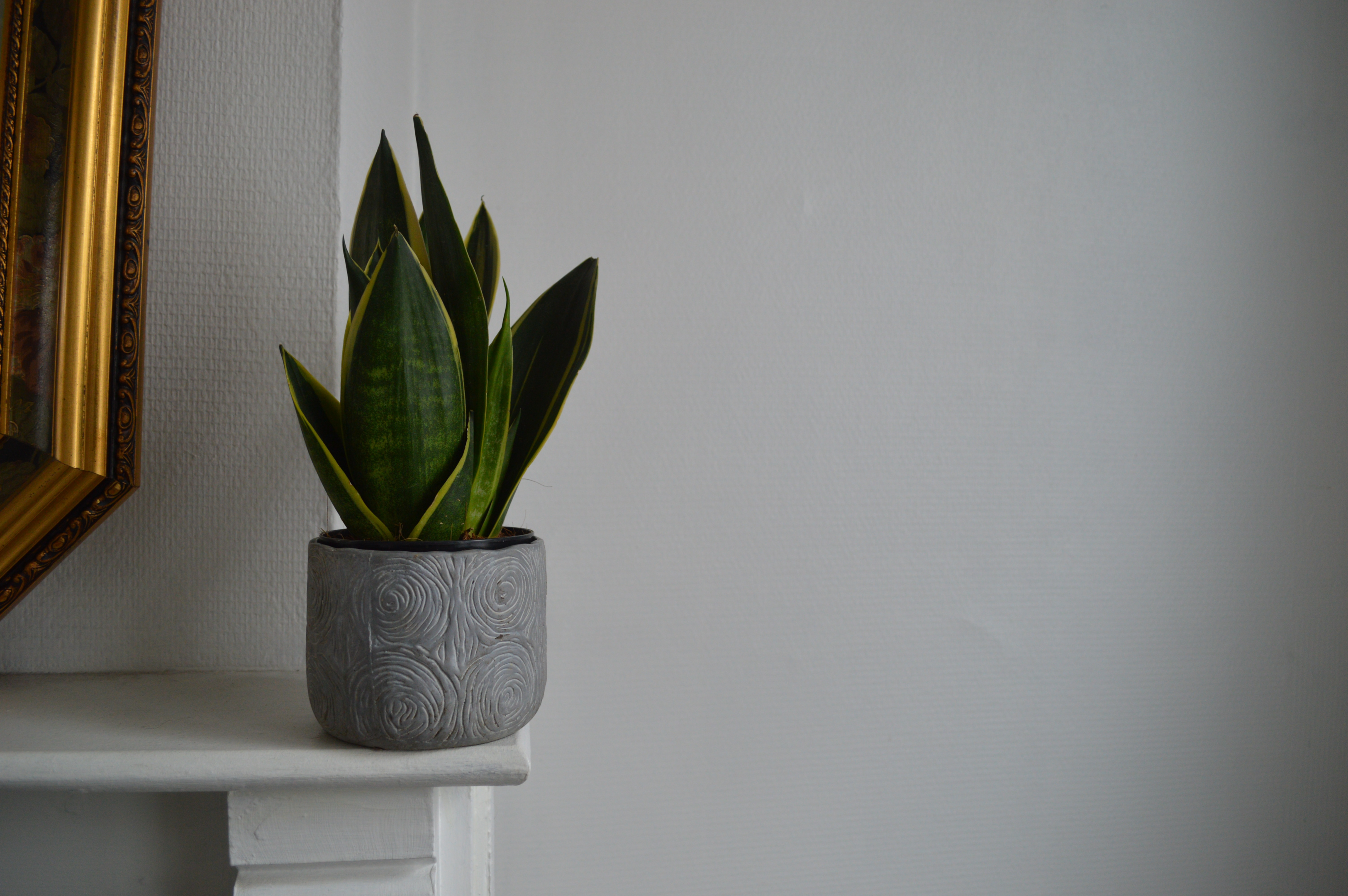
(image by unsplash)
The Snake Plant, also known as Mother-in-Law’s Tongue, is a staple in the realm of low maintenance houseplants. Its ability to tolerate low light and irregular watering schedules makes it a top choice for beginners. The plant’s long, upright leaves, often featuring a mix of green and yellow, thrive in both direct and indirect light, making it versatile for any indoor setting. Additionally, Snake Plants are known to improve air quality by filtering out harmful toxins, contributing to a healthier living environment.
In terms of care, the Snake Plant is fairly low maintenance. It prefers dry air and can go for weeks without water, making it ideal for those who travel often or forget to water. Its soil should be well-drained to prevent root rot, and it can adapt to both natural and artificial light conditions. Its architectural shape and air-purifying qualities make it a popular choice among indoor plants.
For those looking to propagate this plant, it’s quite straightforward. The Snake Plant can be easily propagated from cuttings or divisions, allowing you to grow new plants from a parent plant. This aspect not only makes it a cost-effective option but also a rewarding experience for budding gardeners.
2. Spider Plant: The Effortless Beautifier
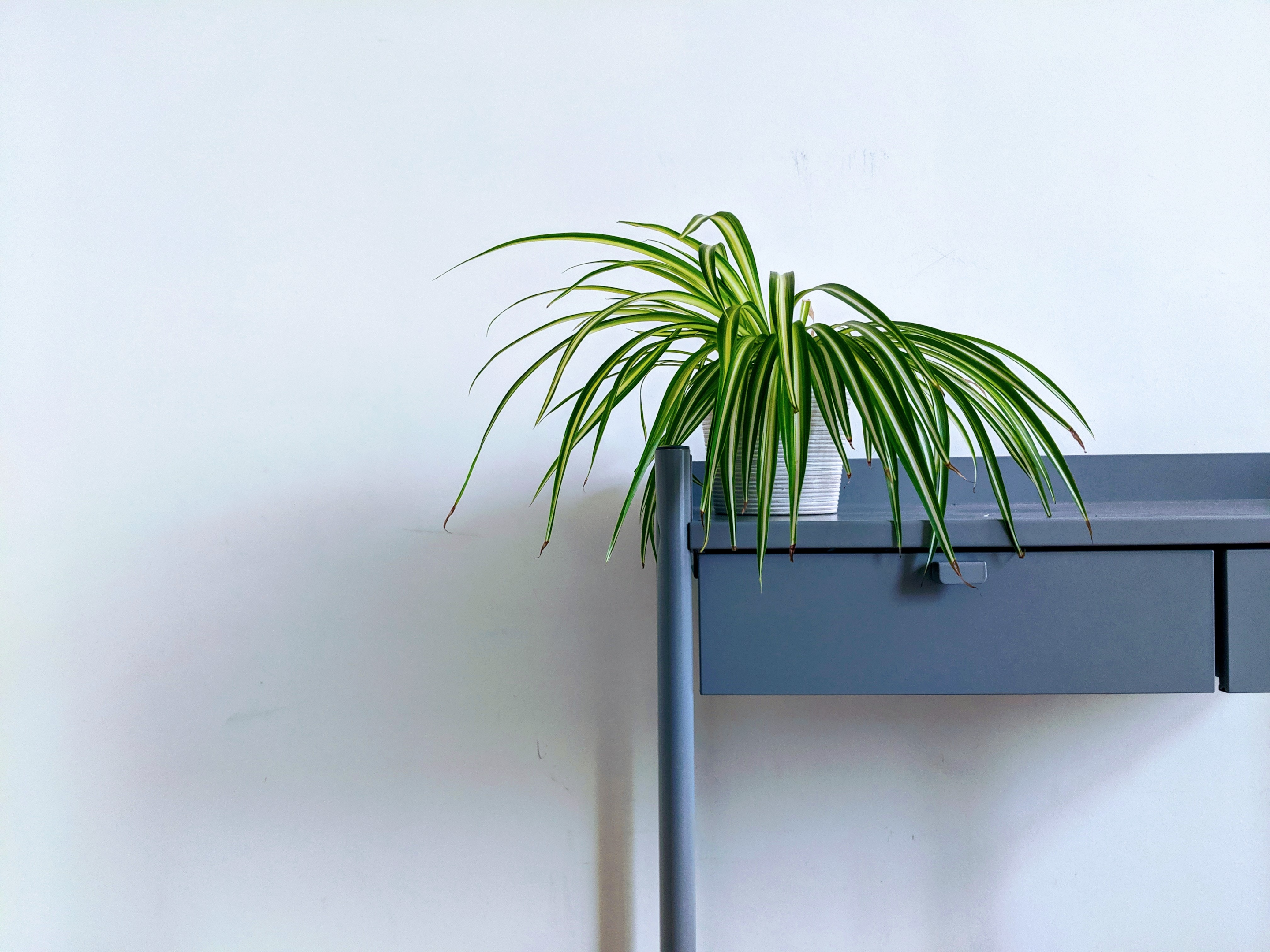
(image by unsplash)
The Spider Plant, with its arching leaves and baby spiderettes, is another excellent candidate for the best low maintenance indoor plants. Known for its ability to thrive in indirect light, it’s perfect for spaces away from south facing windows where bright light is limited. This plant is not only drought tolerant but also grows rapidly, providing instant greenery to your indoor garden.
Spider Plants are particularly known for their ability to improve air quality. They filter out harmful toxins and add a burst of freshness to any room. Their adaptability to various light conditions, including artificial light, makes them suitable for offices and rooms with less natural light.
Caring for a Spider Plant involves ensuring the soil is dry before watering, which typically means a watering schedule of once every two to three weeks. They prefer moist soil but are forgiving if you forget to water them occasionally. These plants are also easy to propagate, with the baby spiderettes quickly growing into new plants when potted in moist soil.
3. Cast Iron Plant: The Undemanding Companion
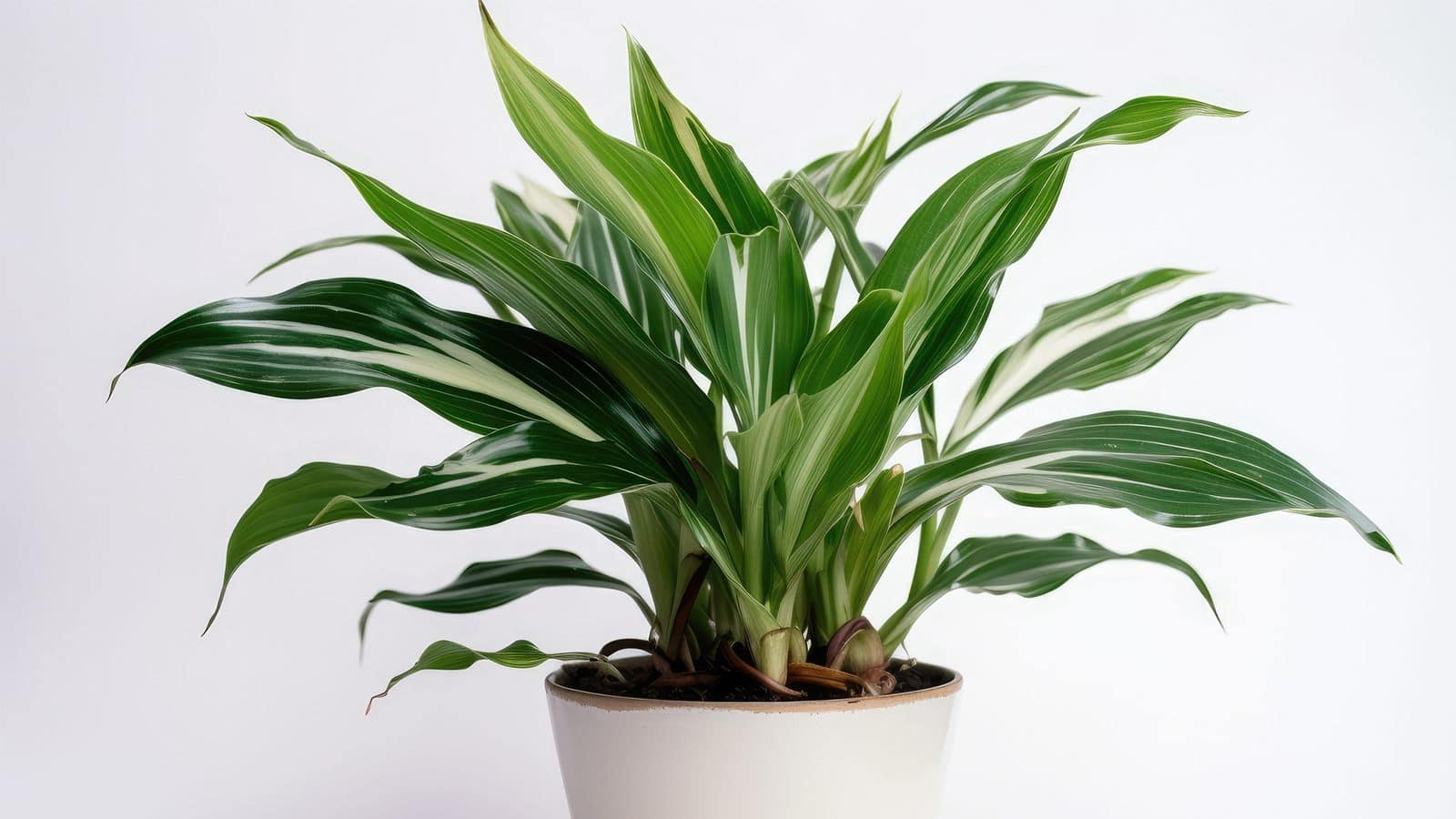
(image by dreamstime)
True to its name, the Cast Iron Plant is a champion of low maintenance plants, capable of surviving in less than ideal conditions. It’s a perfect fit for low light areas, tolerating low light conditions that would be detrimental to many plants. This plant is a testament to the resilience and beauty of indoor plants.
The Cast Iron Plant features lush, dark green leaves that grow slowly but steadily, forming a dense clump of foliage over time. It’s an excellent choice for filling in darker corners of your home or office, where most houseplants would struggle. Its ability to tolerate dry air and fluctuating temperatures adds to its appeal as a low maintenance indoor plant.
When it comes to care, the Cast Iron Plant asks for very little. It thrives in well-drained potting soil and requires watering only when the soil is dry. Overwatering is a common mistake, so it’s important to check soil moisture before adding water. This plant is also resistant to pests and diseases, making it a worry-free addition to your indoor plant collection.
Related to: Modern Leather Accent Chairs Selection: Best Practices For 2023
4. Chinese Money Plant: The Charming Circular Wonder
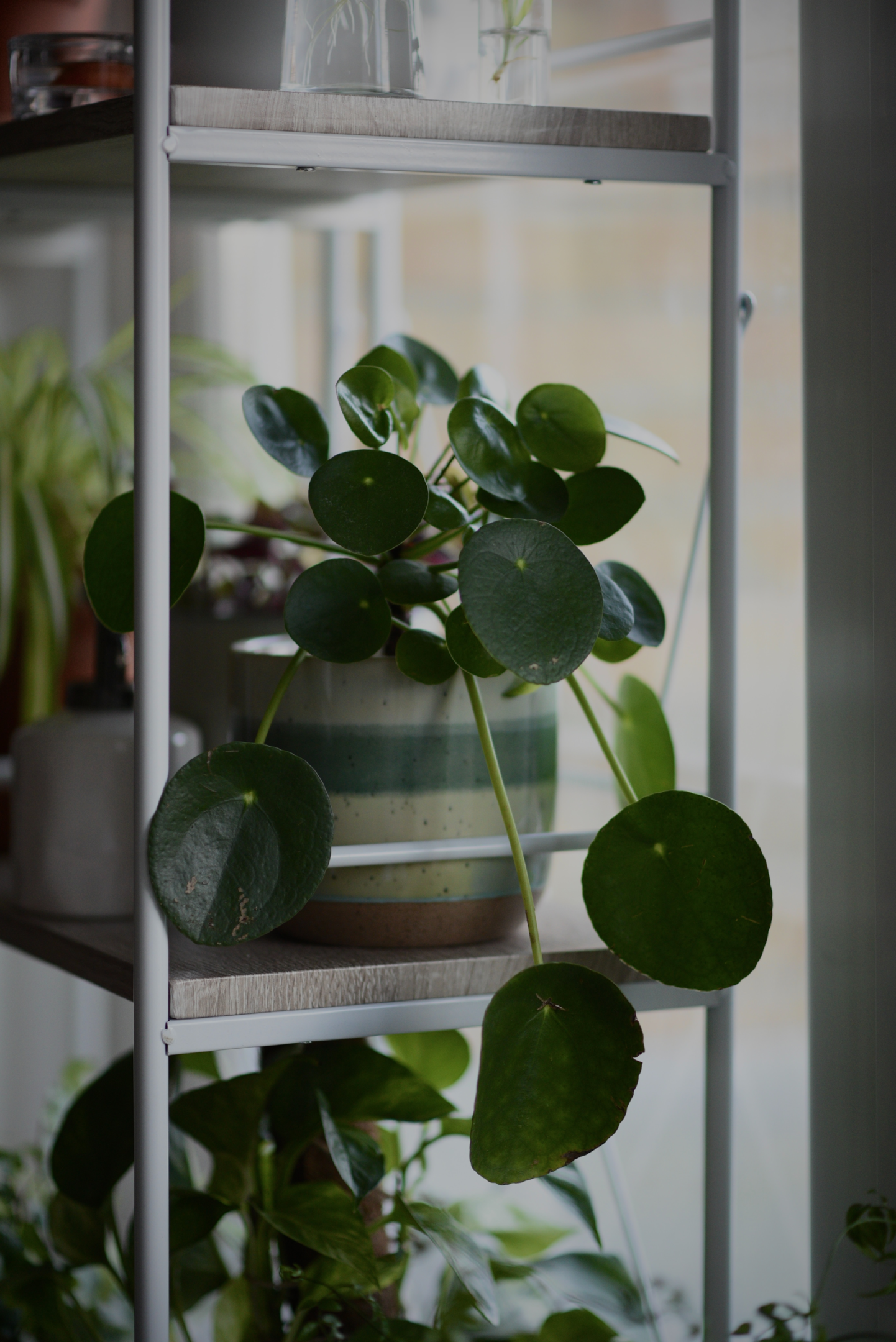
(image by unsplash)
The Chinese Money Plant, with its unique round, coin-like leaves, is a delightful addition to any collection of low maintenance indoor plants. This plant is perfect for those seeking a touch of whimsy in their indoor space. It thrives in bright indirect light, making it suitable for areas that receive filtered sunlight. The bright green leaves, often perched on slender stems, bring a playful yet elegant vibe to any room.
In terms of care, the Chinese Money Plant is fairly low maintenance. It prefers a consistent watering schedule, where the soil is allowed to dry out slightly between waterings. Overwatering can lead to root rot, so it’s important to ensure the potting soil is well-drained. This plant also benefits from occasional misting to replicate the humidity of its native habitat.
Propagating the Chinese Money Plant is a joy in itself. It readily produces offsets or “pups” which can be separated and potted as new plants. This characteristic makes it a generous plant, perfect for sharing with friends and fellow plant enthusiasts. Its ability to adapt to various indoor conditions, coupled with its charming appearance, makes it a favorite among indoor plant lovers.
5. Corn Plant: The Striking Statement Maker

(image by unsplash)
The Corn Plant, with its tall, woody trunk and lush, green leaves, resembles a miniature palm tree, making it a striking choice for indoor gardens. This plant excels in low light conditions, tolerating areas away from direct sunlight. Its dark green leaves, sometimes streaked with yellow or white, add a tropical feel to any indoor environment.
Caring for the Corn Plant is straightforward. It prefers moist soil but is forgiving if you occasionally forget to water it. The key is to avoid overwatering, as this can lead to root rot. The Corn Plant also benefits from being placed in well-drained soil and being fertilized during the growing season for optimal growth.
This plant is not only easy to care for but also beneficial for air quality. It helps filter out harmful toxins, contributing to a healthier living environment. Its adaptability to lower light conditions and fairly low maintenance requirements make it a popular choice for offices and homes alike.
6. Jade Plant: The Prosperous Succulent
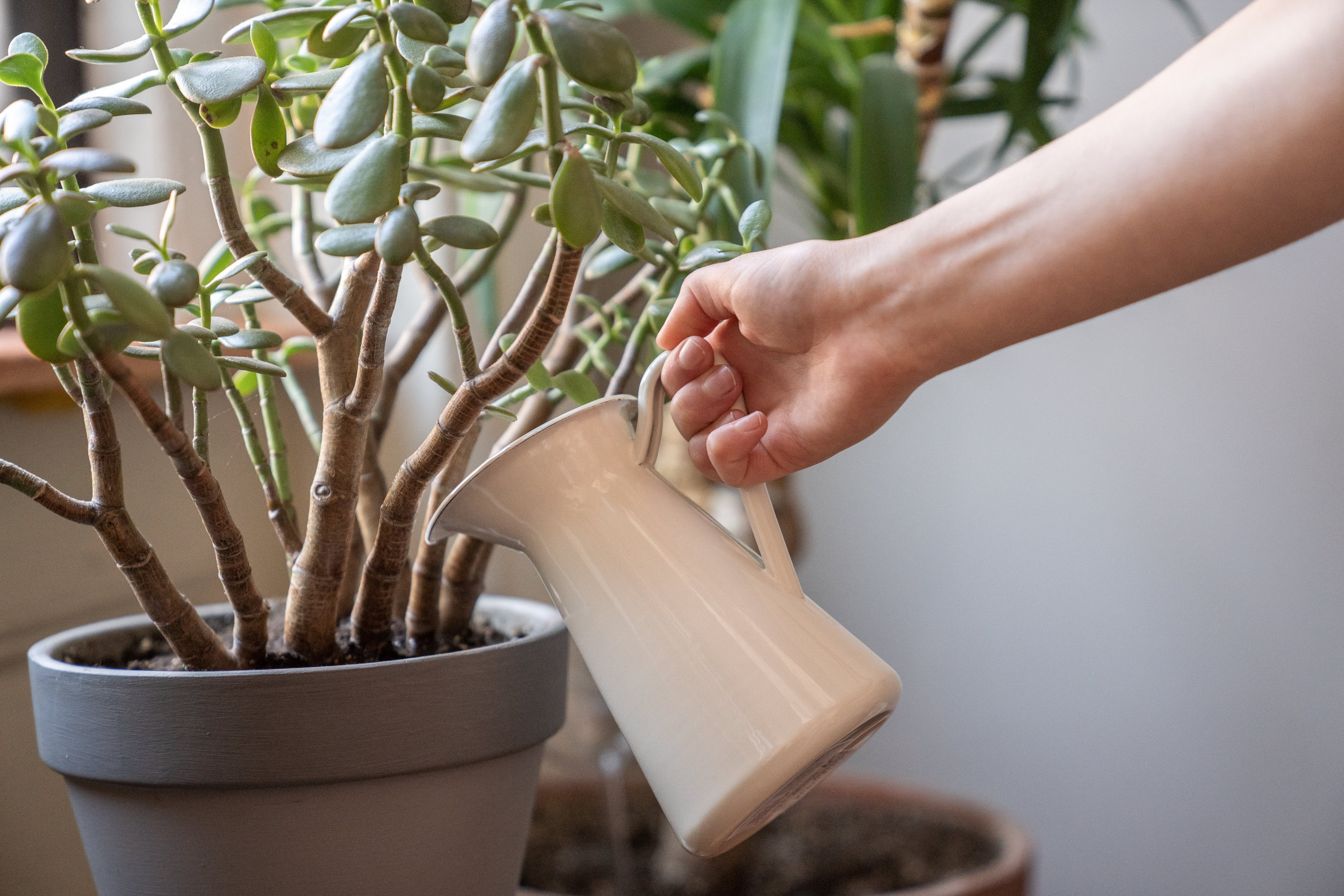
(image by pexels)
The Jade Plant is a drought-tolerant succulent known for its fleshy leaves and woody stems. Often associated with good luck, this plant is a favorite for those looking to add a touch of prosperity to their home. It thrives in bright light but can also tolerate indirect sunlight, making it versatile for different lighting conditions.
As a low maintenance plant, the Jade Plant requires minimal watering. It’s best to allow the soil to dry out completely between waterings, as overwatering can harm the plant. This succulent is particularly forgiving if you forget to water it, making it ideal for beginners or those with busy schedules.
The Jade Plant can also be easily propagated from leaves or stem cuttings, allowing you to grow new plants with ease. Its slow-growing nature and beautiful, glossy leaves make it a long-lasting and attractive addition to any indoor plant collection.
Related to: How To Choose Accent Chairs For A Minimalist Home – Easy Guide
7. ZZ Plant: The Tough and Glossy Favorite
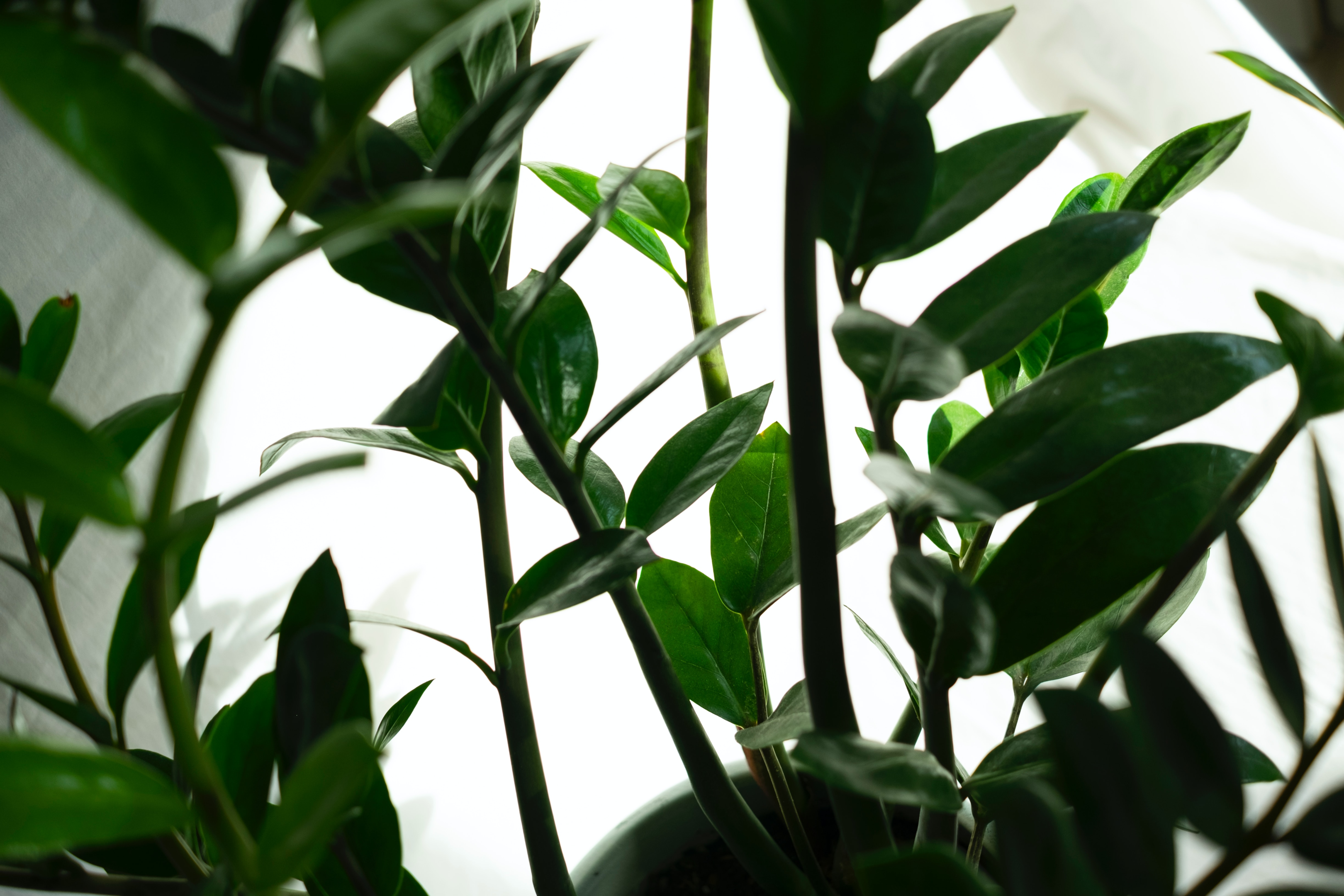
(image by unsplash)
The ZZ Plant stands out with its glossy, dark green leaves and sturdy stems. It’s renowned for its ability to survive in almost any indoor environment, including low light conditions and dry air. This plant is a favorite among those who want a beautiful plant with minimal fuss.
Caring for the ZZ Plant is a breeze. It tolerates irregular watering and can survive for weeks without water, thanks to its drought-tolerant nature. The key is to avoid overwatering, as the ZZ Plant’s roots are prone to rot in moist soil. It thrives in well-drained soil and prefers to be left alone, making it one of the most low maintenance indoor plants available.
The ZZ Plant is not only easy to care for but also a great air purifier. Its ability to remove harmful toxins from the air makes it a healthy addition to your indoor space. Its slow-growing, low-maintenance nature makes it an excellent choice for offices or homes where time and resources for plant care are limited.
8. Rubber Plant: The Bold and Beautiful
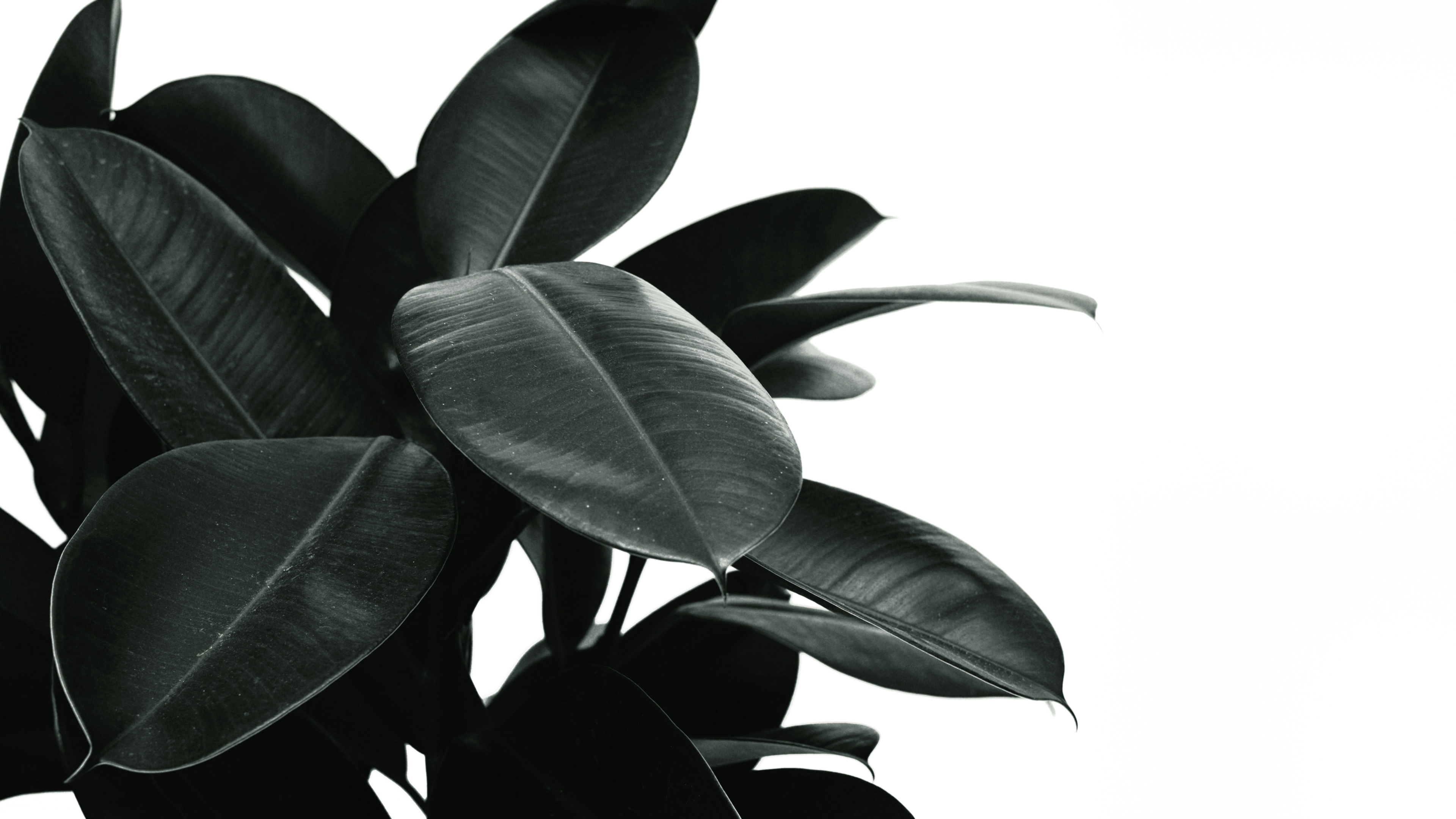
(image by unsplash)
The Rubber Plant is known for its large, glossy leaves that can add a dramatic touch to any indoor space. This plant prefers bright indirect light but can also tolerate lower light conditions, making it adaptable to different areas of your home. Its large, green leaves not only add beauty but also help improve air quality.
When it comes to care, the Rubber Plant is fairly low maintenance. It prefers a consistent watering schedule, where the soil is allowed to dry out slightly between waterings. Overwatering can lead to root rot, so it’s important to ensure the potting soil is well-drained. This plant also benefits from occasional wiping of its leaves to keep them shiny and healthy.
The Rubber Plant can grow quite large, making it a statement piece in any room. It can also be pruned to maintain a desired size and shape, allowing you to customize its appearance to fit your space. Its striking appearance and ease of care make it a popular choice among indoor plant enthusiasts.
9. Air Plants: The Versatile Air-Dwellers
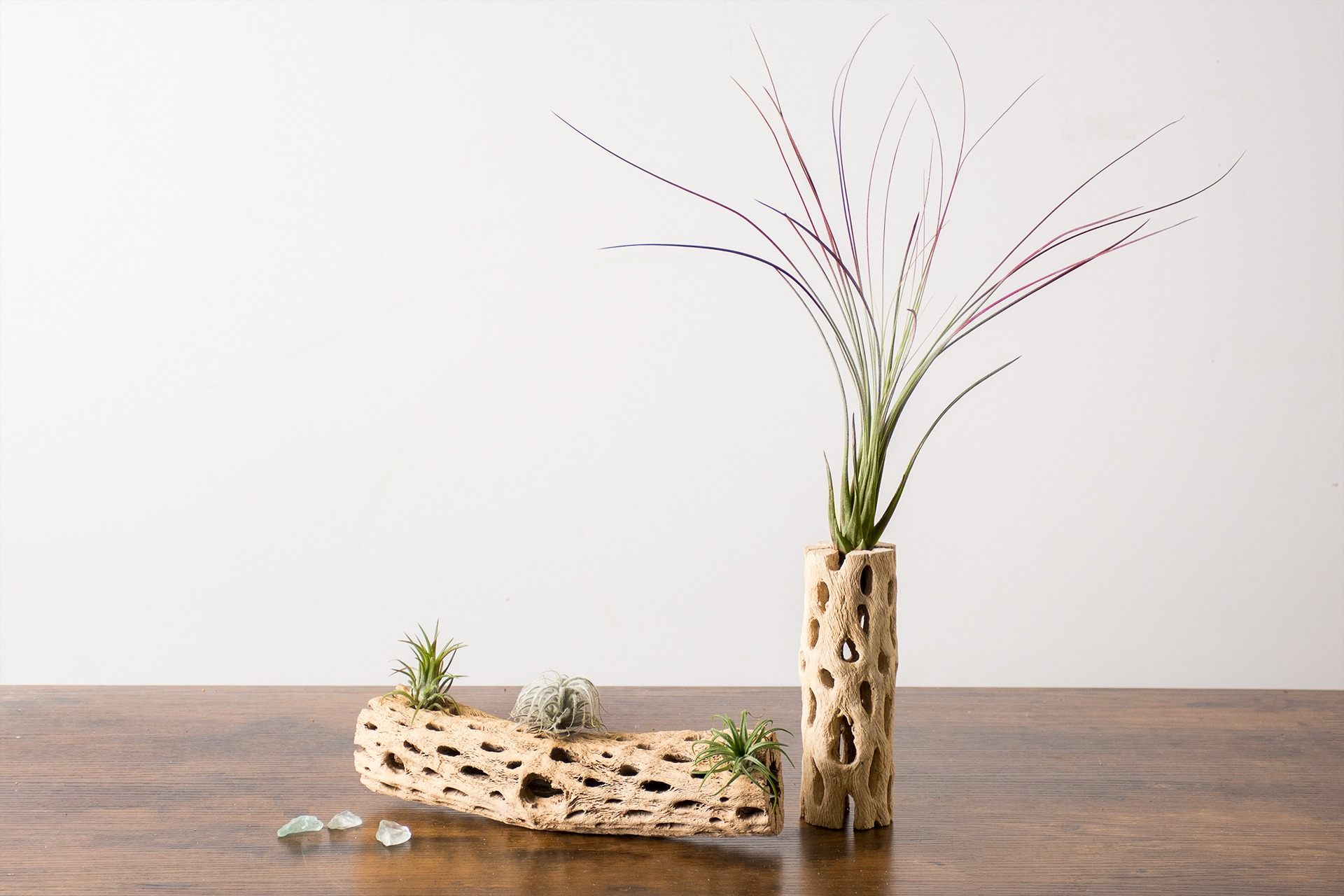
(image by unsplash)
Air Plants are unique in that they don’t require soil to grow, making them one of the most low maintenance plants available. These plants absorb moisture and nutrients through their leaves from the air, making them perfect for those who prefer a soil-free option. They thrive in bright, indirect light and can be placed in a variety of creative displays.
Caring for Air Plants involves misting them with water every few days or soaking them in water for a short period every couple of weeks. They prefer a bright environment but should be protected from direct sunlight to prevent their leaves from drying out. Air Plants are adaptable and can be placed in terrariums, mounted on walls, or simply displayed on shelves.
These plants are not only easy to care for but also add a unique, modern touch to any indoor space. Their soil-free nature and ability to grow in a variety of settings make them a versatile choice for decorating your home or office.
10. Peace Lilies: The Graceful Air Purifiers
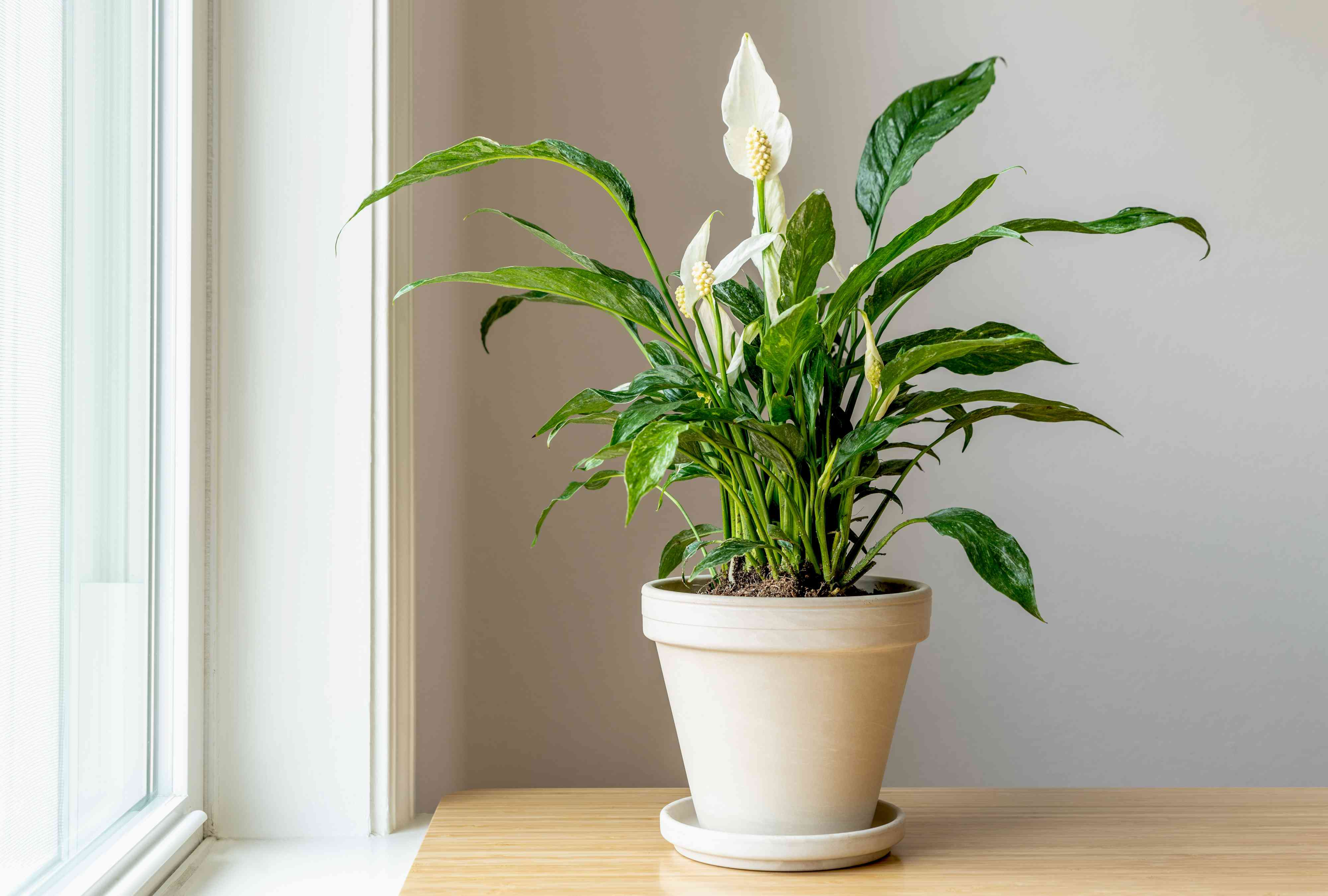
(image by unsplash)
Peace Lilies are renowned for their ability to improve air quality and their elegant white flowers. They thrive in low light conditions, making them suitable for areas away from direct sunlight. These plants are a favorite for those looking to add a touch of elegance and tranquility to their indoor space.
Caring for Peace Lilies is straightforward. They prefer moist soil but are forgiving if you occasionally forget to water them. The key is to avoid overwatering, as this can lead to root rot. Peace Lilies also benefit from being placed in well-drained soil and being fertilized during the growing season for optimal growth.
These plants not only beautify your space but also contribute to a healthier living environment by filtering out harmful toxins from the air. Their low maintenance requirements and beautiful, white flowers make them a popular choice for homes and offices alike.
Related to: Maximized Minimalism: Best Accent Chairs for Small Spaces
Factors to Consider the Best Low Maintenance Indoor Plants
- Light requirements:
- Determine the amount of natural light available in your space. Some plants prefer bright, indirect light, while others can tolerate low light conditions. Choose plants that match your lighting situation.
- Watering needs:
- Low-maintenance plants typically require less frequent watering. Consider your schedule and the plant’s specific water requirements. Succulents, snake plants, and ZZ plants, for example, need infrequent watering.
- Soil type:
- Use a well-draining potting mix appropriate for your chosen plants. Good soil helps prevent overwatering and root rot. Cacti and succulents, for instance, thrive in sandy or gritty soil.
- Humidity tolerance:
- Some indoor plants are more tolerant of dry indoor air, while others require higher humidity levels. If your indoor environment is dry, opt for plants like spider plants or pothos.
- Size and space:
- Consider the available space for your indoor plants. Choose plants that fit comfortably within your living area without overcrowding. Compact varieties or plants that can be pruned are good options for smaller spaces.
- Toxicity:
- If you have pets or small children, be aware of the plant’s toxicity. Some plants can be harmful if ingested, so it’s essential to select non-toxic varieties or place toxic ones out of reach.
- Maintenance tasks:
- Evaluate the care tasks required, such as pruning, repotting, and fertilizing. Low-maintenance plants should need minimal care. Plants like snake plants and peace lilies generally require little attention.
- Pest resistance:
- Choose plants that are less susceptible to pests and diseases. While no plant is entirely immune, some are more resilient than others.
- Temperature tolerance:
- Ensure the chosen plants can thrive within the temperature range of your indoor space. Most indoor plants prefer consistent room temperatures, but some can tolerate variations.
- Longevity:
- Consider the lifespan of the plant. Some indoor plants are short-lived and may need replacing after a few years, while others can thrive for decades with proper care.
- Decorative appeal:
- Select plants that complement your interior decor and personal taste. Different plants come in various shapes, sizes, and colors, so choose ones that enhance the aesthetics of your space.
- Local climate:
- Your local climate can impact indoor plant care. If you live in an area with extreme temperature fluctuations, you may need to provide extra care during certain seasons.
- Allergies:
- Be aware of any allergies to pollen or plant materials that you or your household members may have when choosing indoor plants.
By considering these factors, you can identify the best low-maintenance indoor plants that suit your living space and lifestyle, ensuring a healthier and more enjoyable indoor gardening experience.
Conclusion
The world of best low maintenance indoor plants offers a diverse range of options for beginners and busy plant lovers. From the resilient Snake Plant to the elegant Peace Lily, these plants provide a hassle-free way to add greenery and improve air quality in your indoor space.
Each plant, with its unique characteristics and minimal care requirements, proves that you don’t need a green thumb to enjoy the benefits of indoor gardening. Embrace these low maintenance beauties and transform your home into a lush, healthy haven.
